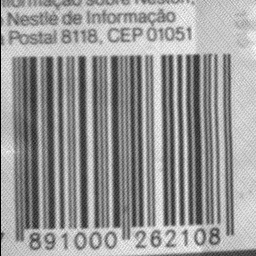 ---
--- 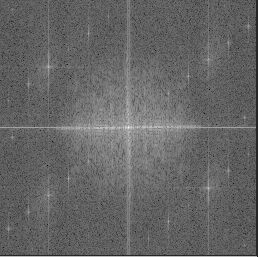
The original image and its magnitude spectrum (dimension 256x256) is shown below
 ---
--- 
Observe that in the magnitude spectrum we can identify coherent noise, "stars" of different sizes. Our objective is to eliminate this noise pattern by making those "stars" equal zero. Displayed below is a pattern that we can use to multiply in the frequency domain and cancel the noise. Pass the mouse over the magnitude spectrum of the image to determine the coordinates of the spikes and create your frequency mask accordingly.
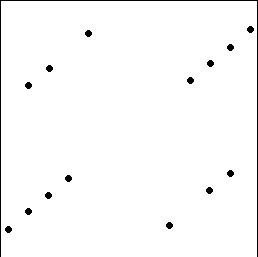
After multiplying in the frequency domain we get
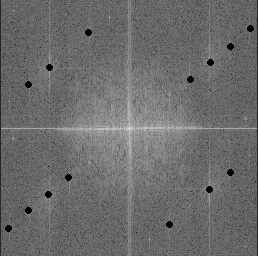
Depicted below is the original image after elimination of the coherent noise
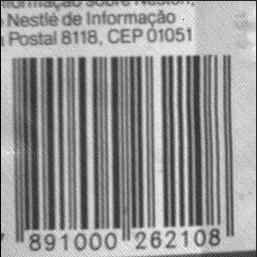
The absolute difference between the original image and the filtered image can be seen below (its maximum amplitude is approx. 6 in a scale of 0-255)
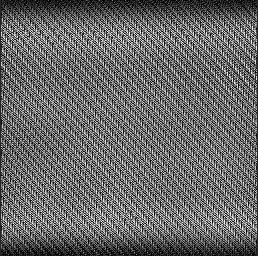
In image restoration the goal is to recover an image that has been corrupted or degraded. The more information we have of the degradation process, the better off we are. This is know as a priori knowledge. There are several techniques in image restoration, some use frequency domain concepts, others attempt to model the degradation and apply the inverse process. The modeling approach requires determining a criterion of "goodness" that will yield an "optimal" solution.
Assuming no noise is present in the system, in the frequency domain the degradation process can be seen as
P(u,v) = H(u,v) Q(u,v)
where
P(u,v) is the degraded image
H(u,v) is the degradation transfer function
Q(u,v) is the original image
And the inverse filtering process as
Q(u,v) = P(u,v) / H(u,v)
The degraded image for our experiment is shown below.
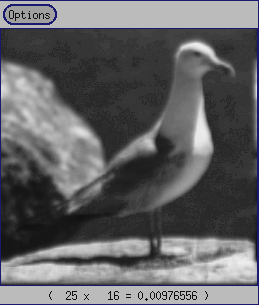 Blurred image
Blurred image
The log(mag+1) spectrum of the blurring function is

The result of the Wiener filtering operation is depicted below.
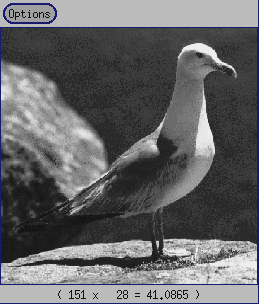 Deblurred image
Deblurred image